ti-force
Flashlight Enthusiast
For a while now I've been using my calibrated homemade integrating sphere to measure OTF (out the front) lumens of different production lights that were sent to me for review, certain lights that I've modified, and misc. lights that other individuals have sent me for testing purposes.
Lately, however, Ive been thinking that some of you probably often wonder what my sphere looks like. You see my posted OTF lumens data, but some of you probably arent sure what this homemade integrating sphere thing looks like, so I thought Id start this thread for anyone whos interested in looking at more than just my posted measurements .
.
For me, this quest for the ability to measure actual lumens of different lights all started after reading MrGman's Actual Lumens readings in 6 Lab Sphere IS with SC 5500 control thread, and then BigC's Actual Lumen Readings in 10.5in Sphere thread, which was created when MrGman handed the torch over to BigC.
At that very moment I knew I had to have a sphere of my own for testing different lights, so I contacted BigC to find out more info. BigC pointed me in the right direction and gave me some valuable advice on how to operate the sphere, etc., then I contacted MrGman seeking help in making my sphere as accurate as I could possibly make it (for a homemade sphere).
MrGman graciously, and selflessly guided me through the entire build and calibration process of not one sphere, but two spheres. The first sphere we built together was my 16 sphere. It worked great, and still works great; thats the sphere that I use most often for testing. But I later found out that I needed to either cut a larger opening in my 16 sphere, which would reduce accuracy, or build a larger sphere to measure these larger lights that were heading my way for testing.
I opted to build the larger sphere because it would give me improved accuracy over creating a larger source port in my 16 sphere, higher lumen measuring capacity, plus I really didnt want to cut on the finely tuned 16 sphere that MrGman and myself spent so much time building and calibrating .
.
Thus, my 24 sphere was born . Of course this was after BigC upgraded to a 24 sphere for higher lumen capacity after he pegged his meter testing one of the high powered SST-90 Maglite builds.
. Of course this was after BigC upgraded to a 24 sphere for higher lumen capacity after he pegged his meter testing one of the high powered SST-90 Maglite builds.
If you're wondering what my spheres were calibrated with, I used multiple lights that MrGman tested in the real Lab Integrating Sphere that he had access to at his work. This still doesn't qualify my sphere as being equal to the real $10,000 sphere, but it's much more accurate than simply using lights that are the same type of light that such and such manufacturer or such and such member measured in their sphere that made X amount of lumens, which means this one should be close.
Yeah it would be in the ballpark by simply assuming one light makes the same amount of light as another, but that's not good enough for me (yes I readily admit that I'm a perfectionist ). If all I wanted to do was compare relative brightness of different lights it would be perfectly fine to use this sphere without calibrating it to exact, known lumen output sources. This would work well at showing which lights are brighter than others, whether the light holds its output well for 20 minutes or drops like a rock in less than 3 minutes, but my goal is to provide OTF lumen measurements that are as close to the real deal as I can get with what I have to work with.
). If all I wanted to do was compare relative brightness of different lights it would be perfectly fine to use this sphere without calibrating it to exact, known lumen output sources. This would work well at showing which lights are brighter than others, whether the light holds its output well for 20 minutes or drops like a rock in less than 3 minutes, but my goal is to provide OTF lumen measurements that are as close to the real deal as I can get with what I have to work with.
All of my testing is done in a completely dark room with no ambient lighting in the room at all, not even an alarm clock , so none of my measurements are skewed from ambient lighting. My meter also has a photopic response curve feature, which offers improved accuracy when taking measurements of lights that have different wavelengths. :thumbsup:.
, so none of my measurements are skewed from ambient lighting. My meter also has a photopic response curve feature, which offers improved accuracy when taking measurements of lights that have different wavelengths. :thumbsup:.
Now it's time for some pictures.
These pictures are a mix of 16 and 24 build pictures. The process is pretty much the same:
First I cut the port for the light source in each sphere:
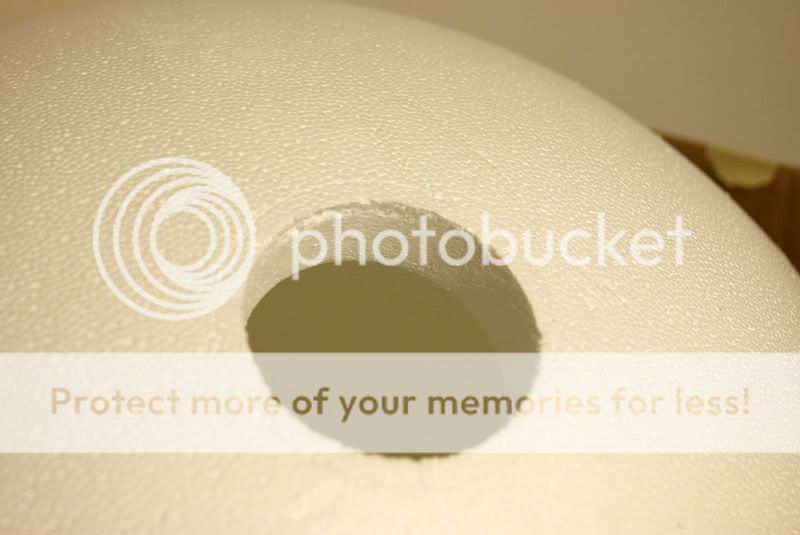
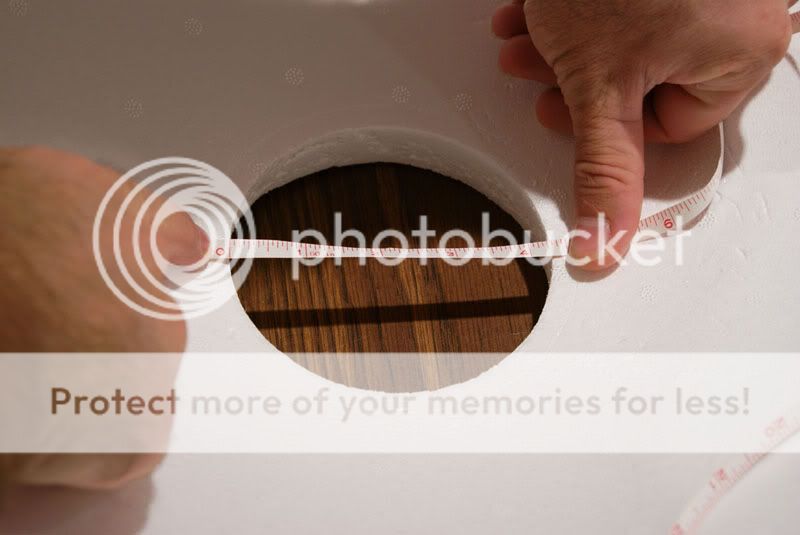
Then I cut the sensor port for my meter, then test fit:
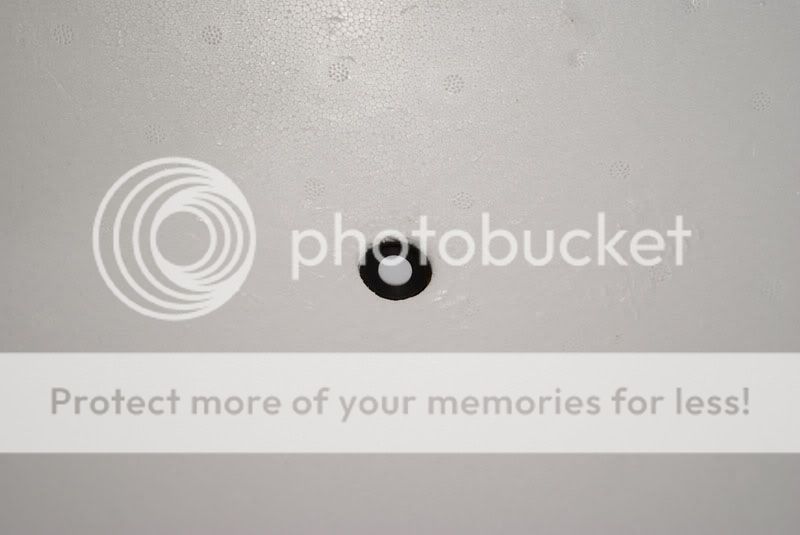
Next I installed a baffle and tested to make certain no direct light will hit the sensor:
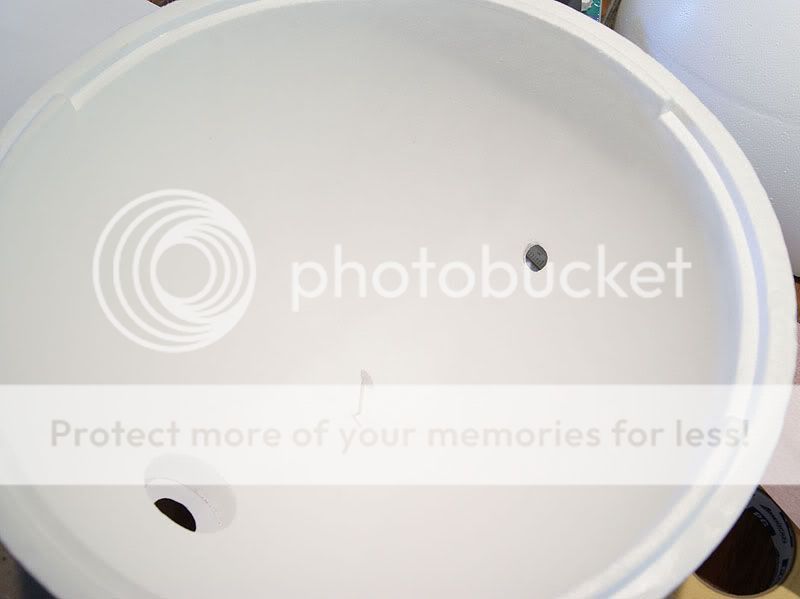
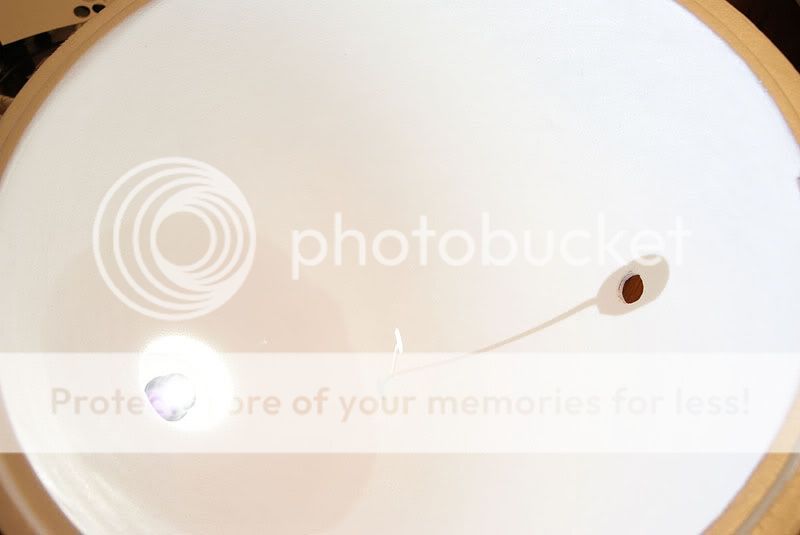
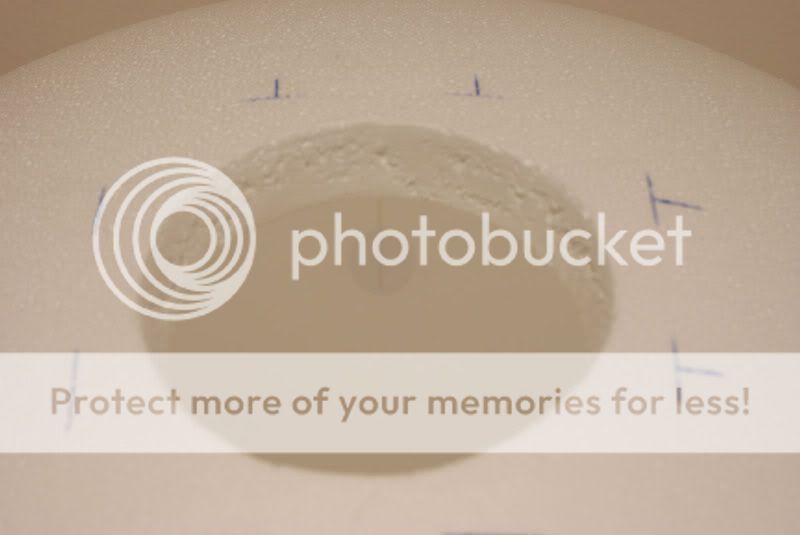
My meter:
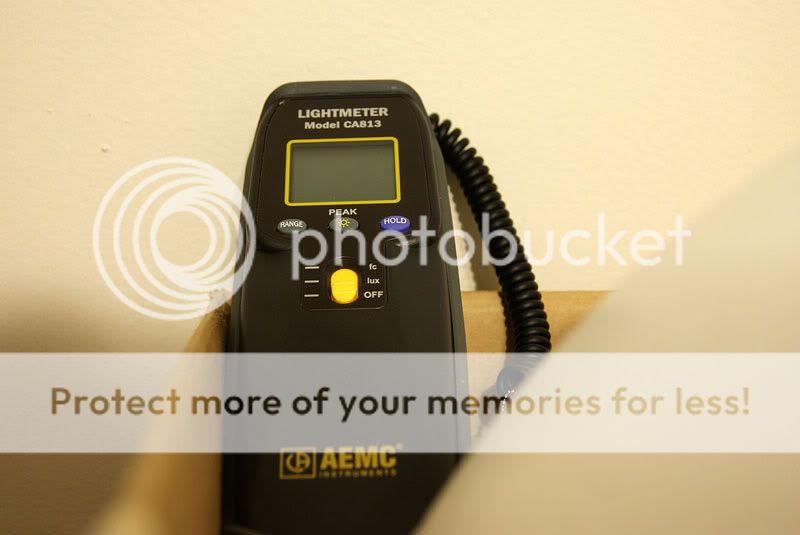
A piece of paper is cut to fit the exact OD of every light that I test. This greatly reduces the amount of light lost around the bezel of lights that are smaller than the source port. This is the same method MrGman and BigC used during testing.:
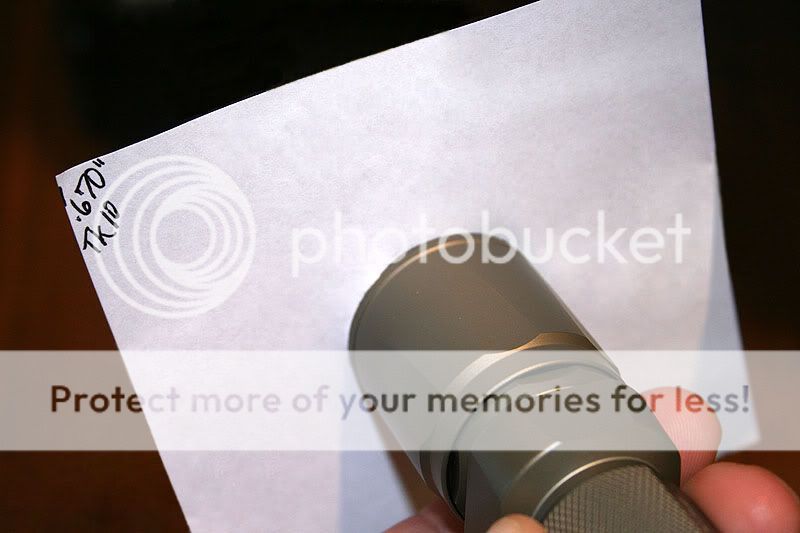
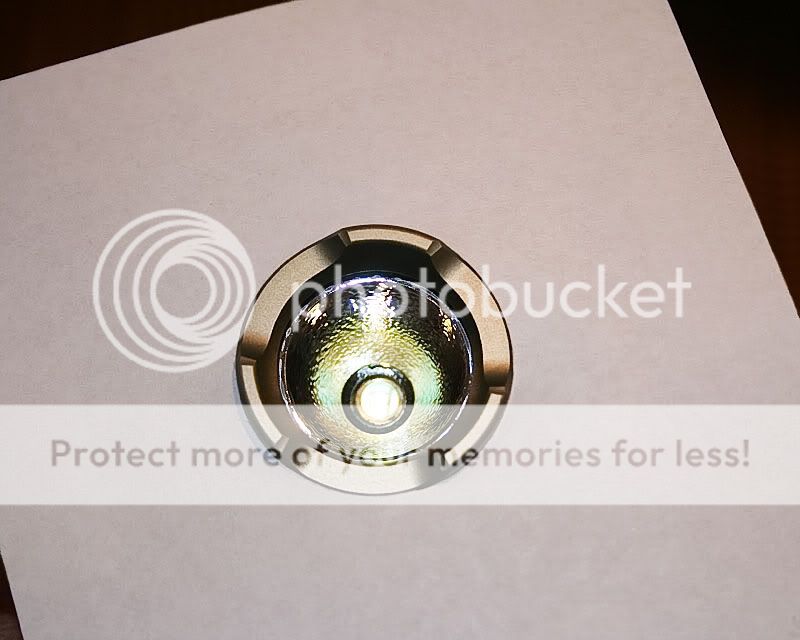
And here it is. Not much to look at, but looks aren't everything :thumbsup::
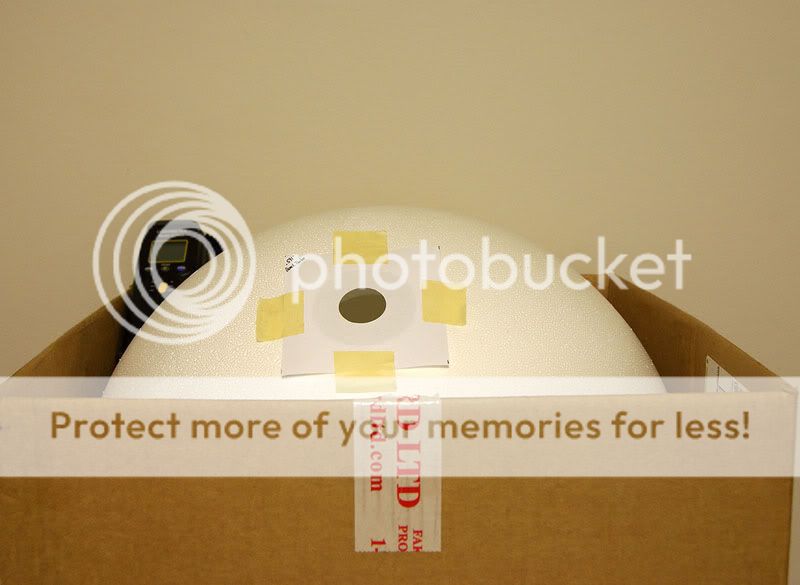
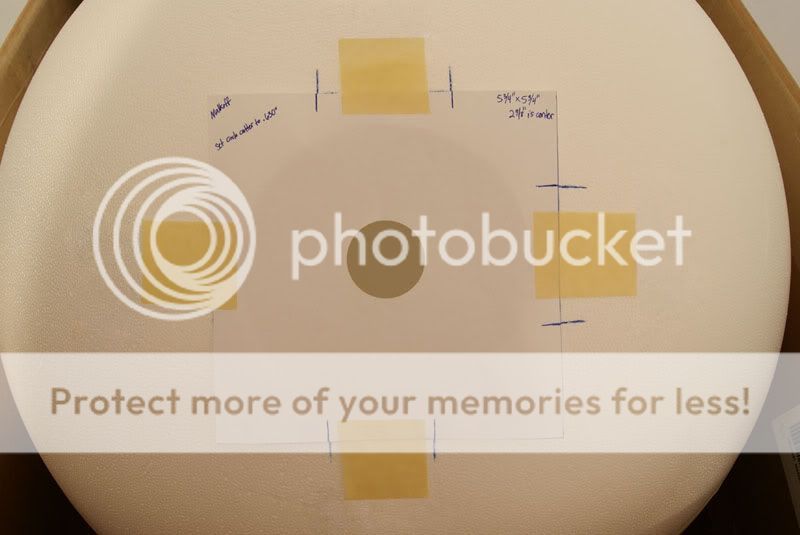
Lately, however, Ive been thinking that some of you probably often wonder what my sphere looks like. You see my posted OTF lumens data, but some of you probably arent sure what this homemade integrating sphere thing looks like, so I thought Id start this thread for anyone whos interested in looking at more than just my posted measurements
For me, this quest for the ability to measure actual lumens of different lights all started after reading MrGman's Actual Lumens readings in 6 Lab Sphere IS with SC 5500 control thread, and then BigC's Actual Lumen Readings in 10.5in Sphere thread, which was created when MrGman handed the torch over to BigC.
At that very moment I knew I had to have a sphere of my own for testing different lights, so I contacted BigC to find out more info. BigC pointed me in the right direction and gave me some valuable advice on how to operate the sphere, etc., then I contacted MrGman seeking help in making my sphere as accurate as I could possibly make it (for a homemade sphere).
MrGman graciously, and selflessly guided me through the entire build and calibration process of not one sphere, but two spheres. The first sphere we built together was my 16 sphere. It worked great, and still works great; thats the sphere that I use most often for testing. But I later found out that I needed to either cut a larger opening in my 16 sphere, which would reduce accuracy, or build a larger sphere to measure these larger lights that were heading my way for testing.
I opted to build the larger sphere because it would give me improved accuracy over creating a larger source port in my 16 sphere, higher lumen measuring capacity, plus I really didnt want to cut on the finely tuned 16 sphere that MrGman and myself spent so much time building and calibrating
Thus, my 24 sphere was born
If you're wondering what my spheres were calibrated with, I used multiple lights that MrGman tested in the real Lab Integrating Sphere that he had access to at his work. This still doesn't qualify my sphere as being equal to the real $10,000 sphere, but it's much more accurate than simply using lights that are the same type of light that such and such manufacturer or such and such member measured in their sphere that made X amount of lumens, which means this one should be close.
Yeah it would be in the ballpark by simply assuming one light makes the same amount of light as another, but that's not good enough for me (yes I readily admit that I'm a perfectionist
All of my testing is done in a completely dark room with no ambient lighting in the room at all, not even an alarm clock
Now it's time for some pictures.
These pictures are a mix of 16 and 24 build pictures. The process is pretty much the same:
First I cut the port for the light source in each sphere:


Then I cut the sensor port for my meter, then test fit:

Next I installed a baffle and tested to make certain no direct light will hit the sensor:



My meter:

A piece of paper is cut to fit the exact OD of every light that I test. This greatly reduces the amount of light lost around the bezel of lights that are smaller than the source port. This is the same method MrGman and BigC used during testing.:


And here it is. Not much to look at, but looks aren't everything :thumbsup::



